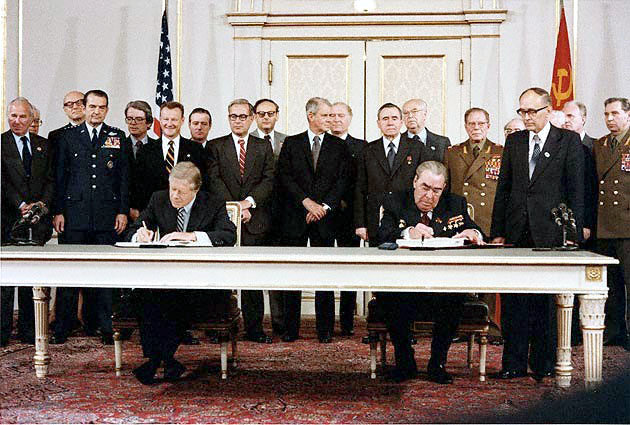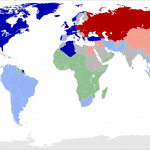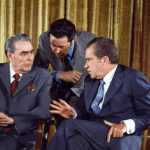The following article on the Salt 2 Treaty is an excerpt from Lee Edwards and Elizabeth Edwards Spalding’s book A Brief History of the Cold War It is available to order now at Amazon and Barnes & Noble.
The Strategic Arms Limitation Treaty (SALT) were two rounds of bilateral conferences and corresponding international treaties between the United States and the Soviet Union. They were known as SALT 1 and SALT 2.
Believing that arms control agreements should be sought regardless of Soviet behavior in other areas, Carter joined Brezhnev in signing it in June 1979. The treaty sought to control strategic nuclear weapons by, among other things, reducing the delivery systems on both sides. Promising on paper, SALT 2’s implementation depended upon Moscow’s keeping its promises.
The uneasiness with which some experts viewed the treaty is reflected in the comment of a senior American diplomat that Carter ignored a fundamental rule in U.S.-Soviet relations: the American public wanted both negotiation and U.S. strength, not one or the other. As we will see, President Reagan understood this American trait very well.
SALT 2 did result in an agreement in 1979, but the United States Senate chose not to ratify the treaty in response to the Russian invasion of Afghanistan, which also took place in 1979. The Soviet legislature correspondingly did not ratify it. The agreement expired on December 31, 1985 and was not renewed.
Critics thought it wholly ineffective and would do nothing to prevent a nuclear war. Eugene Rostow argued the following in 1979:
The Washington Naval Treaty and its progeny did not prevent Pearl Harbor. We, the British, and the French, lulled by the treaty, and hard-pressed in any event to find money for naval-building programs, let our navies slide. We did not build our full quotas or modernize our ships. The Japanese and later the Germans, on the other hand, took full advantage of their quotas. We should recall what the phrase “pocket battleship” meant. The pocket battleship, which the Japanese and the Germans used with such great effect in World War II, was a cruiser with the striking power of a battleship—a powerful modern man-of-war built within the tonnage limits of the treaty.
This article is part of our larger collection of resources on the Cold War. For a comprehensive outline of the origins, key events, and conclusion of the Cold War, click here.
 |
This article is an excerpt from Lee Edwards and Elizabeth Edwards Spalding’s book A Brief History of the Cold War. It is available to order now at Amazon and Barnes & Noble.
You can also buy the book by clicking on the buttons to the left.
Cite This Article
"Salt 2 (Strategic Arms Limitation Talks)" History on the Net© 2000-2024, Salem Media.
April 24, 2024 <https://www.historyonthenet.com/salt-2>
More Citation Information.









